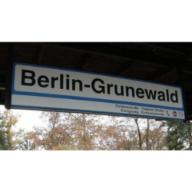這是我的功課,希望你們可以幫我!!
Thank you~
紫禁城的英文名是什麼?
2007-03-08 2:02 am
回答 (6)
2007-03-08 2:06 am
✔ 最佳答案
Imperial Palaces of the Ming and Qing Dynasties in Beijing and Shenyang1
UNESCO World Heritage Site
圖片參考:http://upload.wikimedia.org/wikipedia/commons/thumb/6/68/Forbidden_city_07.jpg/300px-Forbidden_city_07.jpg
State Party
圖片參考:http://upload.wikimedia.org/wikipedia/commons/thumb/f/fa/Flag_of_the_People%27s_Republic_of_China.svg/22px-Flag_of_the_People%27s_Republic_of_China.svg.png
China
Type
Cultural
Criteria
i, ii, iii, iv
Identification
#439
Region2
Asia-Pacific
Inscription History
Formal Inscription:
1987
11th WH Committee Session
Extension/s
2004
WH link:
http://whc.unesco.org/en/list/439
1 Name as officially inscribed on the WH List
2 As classified officially by UNESCO
The Forbidden City (Chinese: 紫禁城; pinyin: Zǐjinchéng; literally "Purple Forbidden City") was the Chinese imperial palace during the mid-Ming and the Qing Dynasties. The Forbidden City is located in the middle of Beijing, China. It is now known as the Palace Museum.
Its extensive grounds cover 720,000 square meters (approximately 178 acres). The Forbidden City has 800 buildings with 9,999 rooms.
The Forbidden City is listed by UNESCO as the largest collection of preserved ancient wooden structures in the world. The Forbidden City was declared a World Heritage Site in 1987 as the "Imperial Palace of the Ming and Qing Dynasties."
The Palace Museum in the Forbidden City should not be confused with the National Palace Museum in Taipei, Taiwan island. Both museums derive from the same institution, but they were split after the Chinese Civil War.
Contents[hide]
1 Names
2 Description
2.1 Layout
2.2 Walls
2.3 Gardens
2.4 Symbolism
2.5 Major buildings
2.6 Surroundings
2.7 History
2.7.1 Construction
2.7.2 Ming and Qing dynasty
2.7.3 After the revolution
2.7.4 Surviving the Cultural Revolution
2.7.5 Modern day
2.8 Gallery
2.9 Influences of the Forbidden City
2.10 Reference
2.11 See also
2.12 External links
2007-03-08 3:09 am
我知...我知....係Forbidden City
參考: me
2007-03-08 2:32 am
紫禁城英文名稱Forbidden City。
2007-03-08 2:06 am
紫禁城的英文名是The Forbidden City.
2007-03-08 2:05 am
Forbidden City
2007-03-08 2:04 am
Forbidden Palace
Hope this help
Hope this help
收錄日期: 2021-04-25 20:18:23
原文連結 [永久失效]:
https://hk.answers.yahoo.com/question/index?qid=20070307000051KK02436




